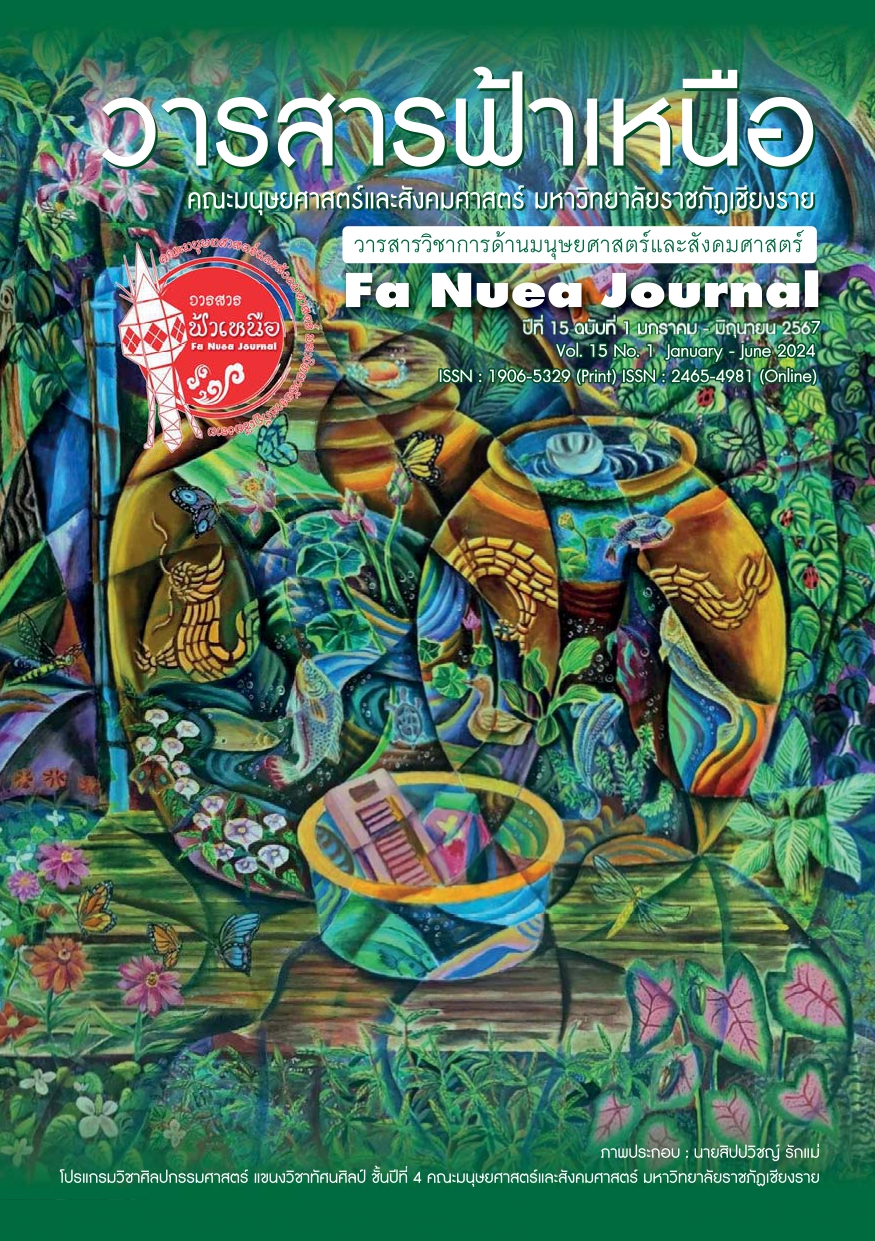The Development of Japanese Reading Proficiency of Japanese Major Students by Using Extensive Reading Activities
Main Article Content
Abstract
This study aims to compare Japanese reading achievements before and after participation in designed extensive reading activities among Japanese students at Mahasarakham University, and to investigate students’ opinions regarding the use of these activities. The convenience sampling method, as outlined in Ethics in Human Research, was employed. Twelve volunteers engaged in 10 weeks of extensive reading activities. The research employed five instruments: 1) reading comprehension achievement tests administered before and after participation in the extensive reading activities, 2) daily reading logs, 3) reading report forms, 4) an interview form, and 5) a questionnaire. Data analysis utilized descriptive analytics including mean, percentage, standard deviation, statistical data, and t-tests. Results indicate that: 1) extensive reading activities significantly improved students’ Japanese reading comprehension, with posttest scores surpassing pretest scores at the 0.05 level of significance, and 2) students’ opinions, as revealed through the questionnaire and reading logs, were predominantly positive (mean = 3.87, SD = 0.25).
Article Details

This work is licensed under a Creative Commons Attribution-NonCommercial-NoDerivatives 4.0 International License.
Articles, information, content, pictures, etc. which have been published in Fa Nuea Journal, are copyright of Fa Nuea Journal. If any person or party wishes to disseminate all or part of it or take any action must be referenced. Do not use for commercial purposes and do not modify (CC-BY-NC-ND). For further details, please access at Attribution-NonCommercial-NoDerivatives 4.0 International (CC BY-NC-ND 4.0)
References
กระทรวงศึกษาธิการ. (2551). หลักสูตรแกนกลางการศึกษาขั้นพื้นฐานพุทธศักราช 2551 (พิมพ์ครั้งที่ 1). ชุมนุมสหกรณ์การเกษตรแห่งประเทศไทย. http://academic.obec.go.th/images/document/1559878925_d_1.pdf
เนชั่น, พอล. (2564). เรียนภาษาอย่างไรให้ได้ดี [What do need to know to learn a foreign language]. (พิมพ์ครั้งที่ 1). สถาบันภาษา มหาวิทยาลัยบูรพา.
บุญชม ศรีสะอาด. (2545). การวิจัยเบื้องต้น (พิมพ์ครั้งที่ 7). สุวีริยาสาส์น.
วรวุฒิ ตัถย์วิสุทธิ์. (2546). การจัดโปรแกรมการเลือกอ่านตามความสนใจเพื่อพัฒนาความเข้าใจในการอ่าน [รายงานการศึกษาอิสระปริญญาโท ไม่ได้ตีพิมพ์]. มหาวิทยาลัยขอนแก่น.
Beglar, D. (2013). A Broad Conceptualization of Assessing Extensive Reading. JLTA jounal, 16, 1-13. https://doi.org/10.20622/jltajournal.16.0_1
Day, R., & Bamford, J. (1998). Extensive Reading in the Second Language Classroom. Cambridge University Press.
Endris, A. (2018). Effects of extensive reading on EFL Learners’ Reading Comprehension and Attitudes. International Journal of Research in English Education, 3(4), 1-11. https://doi: 10.29252/ijree.3.4.1
Hayashi, C. (2011). Extensive Reading and Intrinsic Motivation to Read. The Journal of engaged pedagogy, 10(1), 51-58. http://dl.ndl.go.jp/info:ndljp/pid/10481443
Jenks, D., & Brinham, A. D. (2012). The effects of text selection on student attitudes toward extensive reading. The journal of Kanda University of International Studies, 24, 181-202. http://id.nii.ac.jp/1092/00000609/
Lake, J., & Holster, T. A. (2012). Increasing Reading Fluency, Motivation and Comprehension through Extensive Reading. Studies in the humanities, 76, A47-A68. http://id.nii.ac.jp/1500/00002409/
Nakamura, R., (2021). Extensive Reading and After-reading Tasks for Four-skill Development for Japanese False-beginner University EFL Learners: Affective and Self-perceived Effects. Dokkyo journal of language learning and teaching, 9, 3-24. http://id.nii.ac.jp/1140/00002508/
Radcliffe, P. (2013). A Review of Two Years of Extensive Reading. 文化と言語:札幌大学外国語学部紀要, 78, 103-115. https://cir.nii.ac.jp/crid/1050001337554871168
Takase, A. (2012). The Effectiveness of Sustained Silent Reading in Becoming Autonomous Learners. 関西大学外国語教育フォーラム, 11, 1-14. https://cir.nii.ac.jp/crid/1050001202911384192
Unchai, T., Thongsan, N.C. (2021). Factors affecting extensive reading: The investigation of Thai primary students. In A. Sukying (Ed.), Harmony in Diversity: Multidisciplinary Perspectives on Glocalisation. The 2nd Language, Society and Culture International Conference (LSCIC). (pp. 188-208).
Waring, R. (2000). Guide to the ‘why’ and ‘how’ of using graded readers. Oxford University Press.
Yamashita, J. (2013). Effects of extensive reading on reading attitudes in a foreign language. Reading in a Foreign Language, 25(2), 248-263. https://cir.nii.ac.jp/crid/1010000782117273089


